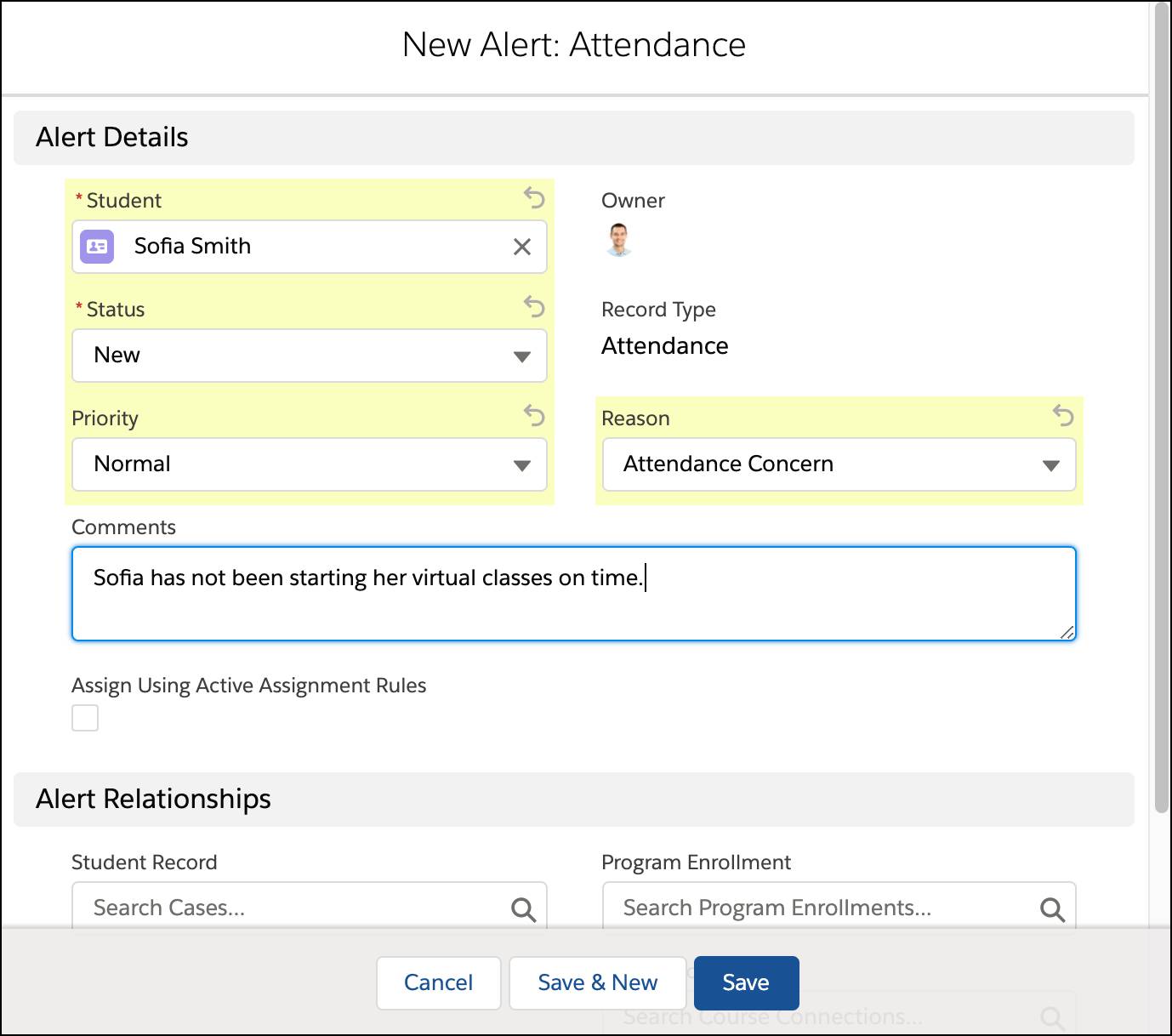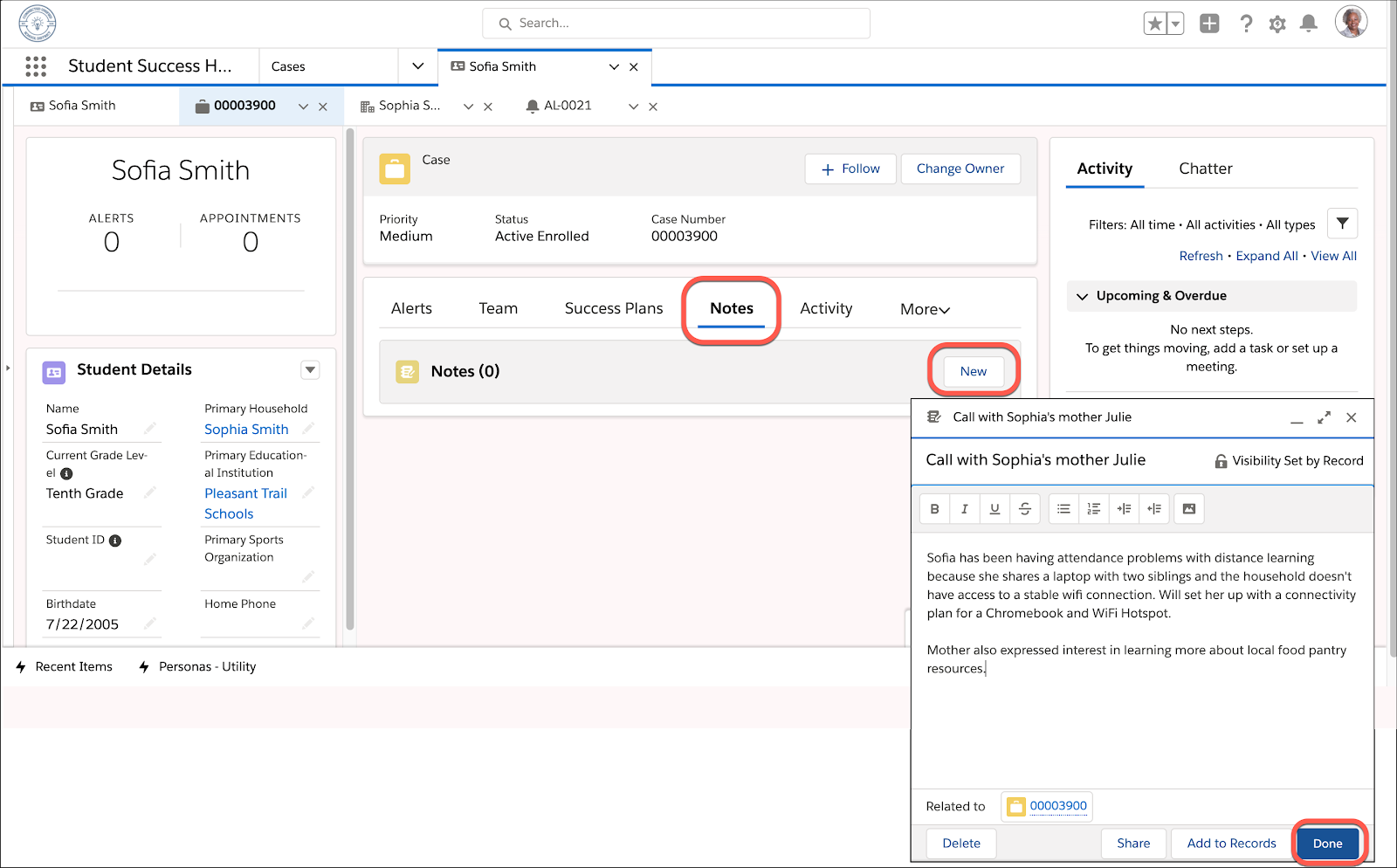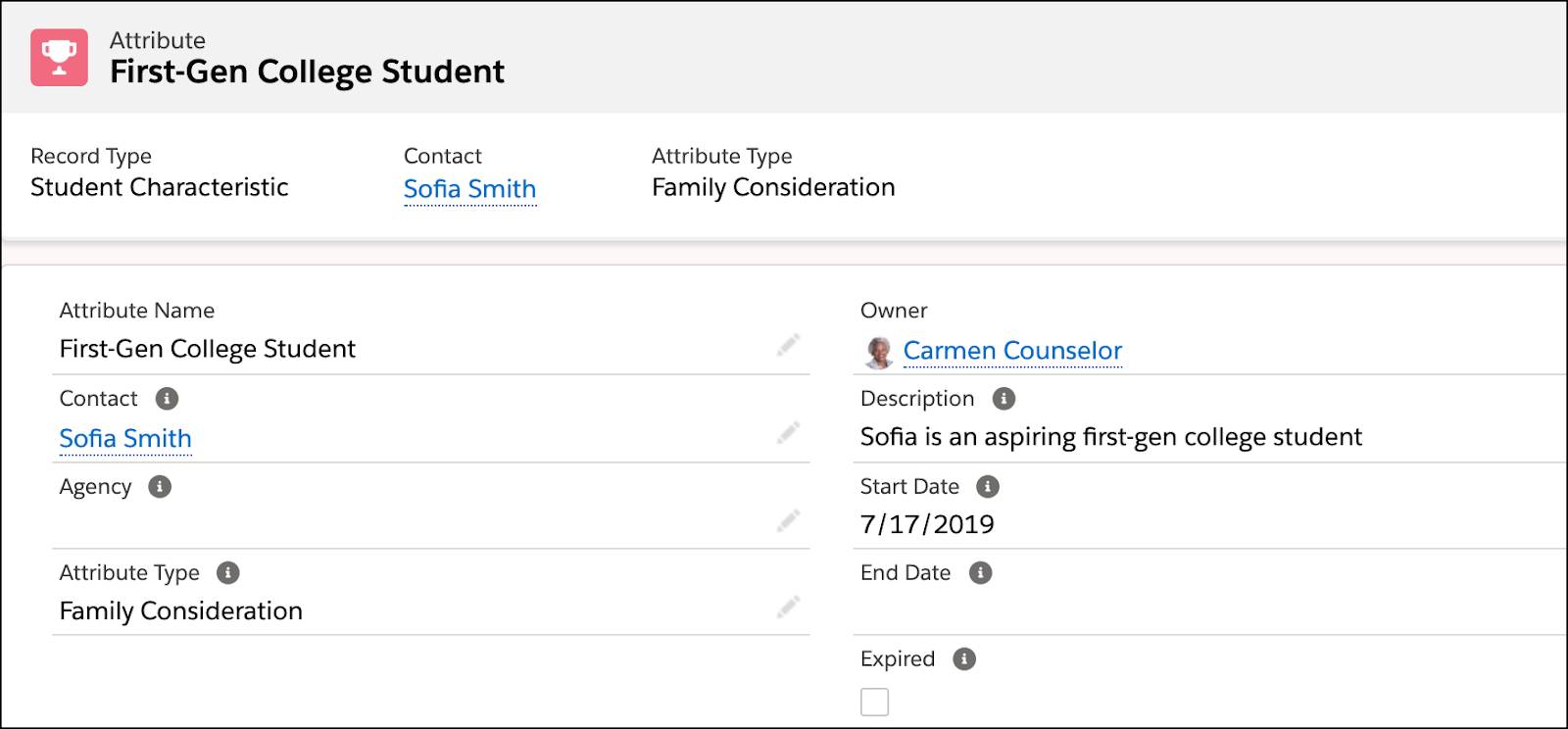Use Alerts and Case Management in Student Success Hub for K-12
Learning Objectives
After completing this unit, you’ll be able to:
- Explain how alerts keep stakeholders informed of students’ needs.
- Use Student Success Hub for collaborative case management.
Student support is a team sport and the team needs to have an efficient way to work together to keep students on track. Let’s review the roster of team players and the key challenges they each face in their role:
- Teachers manage an ever-evolving list of to-do’s while they also work tirelessly to ensure that all of their students are learning.
- School leaders are responsible for ensuring that all of their staff are successful, but they can’t be in every classroom at once.
- School counselors often have caseloads so large that just glancing at the number makes mere mortals feel dizzy.
While there’s no doubt that student support teams are made of superheroes, they shouldn’t have to rely on actual superpowers to do their jobs. What they need are real, functional tools that make it possible to serve and support all of their students. In this unit, you learn about the key features of Student Success Hub that drive collaborative case management. We start with one of the most valuable components of case management in Student Success Hub: alerts.
What Are Alerts?
An alert is a notice that action or extra attention is called for on behalf of a student. We won’t get too technical here, but it’s important to know that the Alert custom object is included with Student Success Hub. Every alert is related to a student case record and, of course, to the student contact associated with that case.
Student support teams use two types of alerts in Student Success Hub: manual and automated. With both types you can efficiently move from alert to action in order to quickly support students. Here are a few key features of each alert type.
With manual alerts you can:
- Make an observation and route the information to support staff.
- Create custom alerts and automatic follow-up tasks.
With automated alerts you can:
- Receive predictive alerts based on attendance, grades, behavior, and more.
- Create custom alerts and automatic follow-up tasks using clicks, not code.
In this unit, we show you how to create a manual alert. With the help of your Salesforce Administrator, you can decide which automated alerts to set up to best serve your school community.
Now you know the basics about alerts and that they are a pivotal part of collaborative case management in Student Success Hub. Want to see how this looks in action? Keep reading to follow along with a day in the life of high school counselor Carmen in the (fictional) Connected School District, as she supports one of her students, Sofia.
Create an Alert
This semester Sofia is enrolled in the distance learning program at her high school. Her math teacher has noticed that on four of the last six school days, Sofia has missed math class. He’s concerned about Sofia and the impact that the attendance issue could eventually have on her grades. He wants to get to the root of the attendance issue before it negatively affects Sofia’s academic performance, so he creates a new alert to notify Sofia’s counselor.
Follow these steps to create an alert like the one Sofia’s math teacher creates.
- From the student case record, select the Alerts tab and click New.

- Choose the type of alert you want to create. For this example, Sofia’s teacher selects Attendance as the alert type and clicks Next.

- Fill in the student’s contact name and the status of the alert. Since this alert is created from Sofia’s student case record, her name is automatically added as the student contact. Her teacher selects New as the status of the alert.

- Fill in other relevant details. For this example, Sofia’s teacher selects Attendance Concern as the reason for the alert, sets the priority as Normal, and adds a brief comment.
- Click Save.
Keep Track of Outreach
Since Carmen is Sofia’s counselor, Carmen gets a notification when the new alert is added to Sofia’s student case record. Carmen is away from her office when the alert comes through, but she can review the alert on her phone using the Student Success Hub mobile app.
After reading the details of the alert, Carmen calls Sofia’s parent, Julie, to learn more about Sofia's attendance issue and get Sofia the support she needs. Carmen can initiate the call directly from the mobile app since Julie’s contact information is in the Smith Household account record that’s linked to Sofia’s case record.
During her call with Julie, Carmen learns that Sofia’s attendance issue stems from some technology issues she’s having at home. Sofia shares a laptop with her two siblings, who are doing distance learning as well. The family is also experiencing Wi-Fi issues. As they discuss school and other topics, Carmen finds out that Julie would be interested in learning more about local food pantry resources.
While she is sad to hear that technology and food insecurity issues have been causing stress for Sofia and her family, Carmen knows the call was helpful. She learned about tangible, solvable problems that she can assist with right away. Through the school’s tech support program, Carmen can get Sofia her own Chromebook and a Wi-Fi hotspot for her family’s residence. She can also connect Sofia’s family with a social worker who will help with food pantry resources.
Carmen uses Student Success Hub to help her take action, by logging her call with Julie, and creating a note.
Log a call
When she hangs up, Carmen uses the mobile app to log the details of her call on Sofia’s student case record.
Follow the steps below to log a call like the one Carmen makes to Julie.
- From the student case record, click Log a Call on the Activity tab.
- Record the details of the call.
- Click Save.
The logged call is now a part of the activity timeline on Sofia’s student record—no need for Carmen to worry about losing a record of the call if a sticky note goes missing. The outreach details are accessible at any time to Carmen, as well as other members of Sofia's success team (more on success teams in the next unit).
Create a note
When Carmen returns to her office, she decides to add a note about her call with Julie to Sofia’s case record. The steps to create a note and the steps to log a call are quite similar, and at first glance they may seem like repetitive actions. However, there is a distinction. Logging the call helps Carmen document the conversation to keep an accurate record of communication for all support staff who work directly with Sofia; it benefits the team. Creating a note gives Carmen a space to jot down details, thoughts, or ideas that may be especially useful to her. Notes are typically for the benefit of the note creator.
Carmen logs into Student Success Hub on her laptop and picks up right where she left off. Notes can be created from a few different places in Student Success Hub. Carmen creates her call note from the Notes tab on Sofia’s student case record.
Follow these steps to create a note.
- From the Notes tab, select New.
- Record any details you want to include in the note.
- Click Done.

Create an Attribute
Now that she has documented her call to Julie, Carmen decides to create an attribute on Sofia’s student case record to log the technology issues Sofia is experiencing. In Student Success Hub an attribute is simply a characteristic of a contact (in this case, a student contact). Attributes can be anything your school needs them to be, really. Attributes are flexible in order to help schools track the characteristics that best help the staff at each school understand their students’ unique experiences and needs throughout their journeys. Attributes can also have a beginning and end date, which can be helpful for documenting the duration of something like temporary housing insecurity.
Sofia already has one attribute on her student record. During Sofia’s freshman orientation Carmen created an attribute when she learned that Sofia is an aspiring first-generation college student.
Sofia’s technology situation at home is important information that helps support staff better understand her learning environment and individual needs. It’s especially important since Sofia is enrolled in the distance learning program. All of this makes the technology situation a great candidate to be logged as an attribute.
Follow these steps to create a new attribute:
- On the student case record, click New Attribute.
- Select Student Characteristic as the attribute record type and click Next.

- Name the attribute and select an attribute type. For this example, Carmen names the attribute
Technology barriers. From the dropdown menu, she selects Family Consideration as the attribute type.
- Fill in any other details you want to include on the attribute record. Carmen adds a description and a start date to the attribute she creates for Sofia.
- Click Save.
In the next unit, you learn how Carmen uses Student Success Hub to activate other support staff members to move from alert to action in order to solve Sofia’s technology barriers so Sofia can get back to focusing on her coursework instead of struggling with obstacles out of her control.
